Dinner
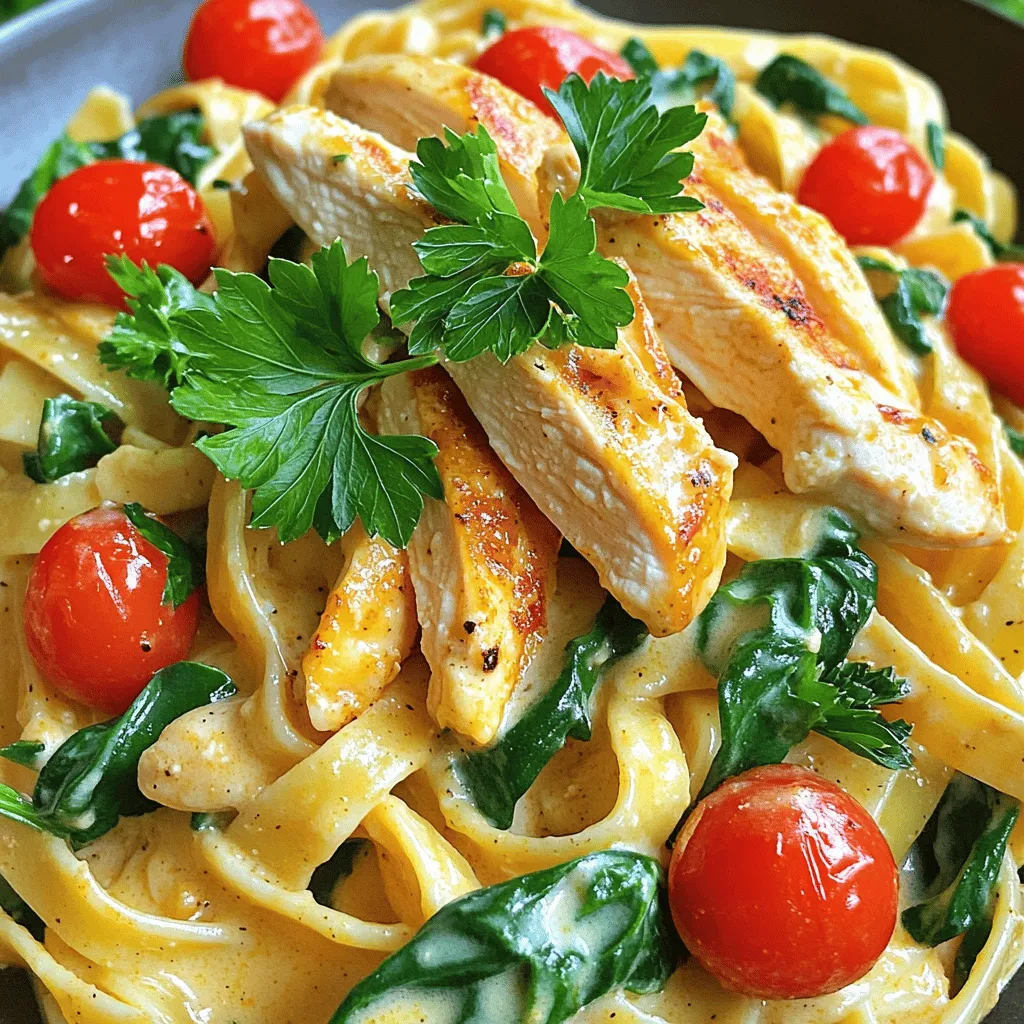
Creamy Cajun Chicken Pasta Flavorful and Easy Recipe
Are you ready to spice up your dinner routine? In this post, I’ll share my easy recipe for Creamy Cajun Chicken Pasta. With bold flavors
. When you pick tuna, look for high-quality options. Canned tuna should have a good color. Choose light tuna for a milder taste. If you want something richer, go for chunk white tuna. Always check the label for sustainability. Brands that use responsible fishing practices are the best choice. Your tuna melt will taste better and help the planet too. Grilling your wraps right makes all the difference. Use a non-stick skillet or grill pan. Heat it over medium heat and add olive oil. Make sure the oil is hot before adding the wraps. This helps them get golden brown and crispy. Grill each side for about 3-4 minutes. Keep an eye on them, so they don’t burn. You want that cheesy goodness to melt and ooze out! Prep your tuna mixture ahead of time for quick meals. You can store it in the fridge for up to two days. Just keep it in an airtight container. When you’re ready to eat, grab your tortillas and spinach. Assemble your wraps in minutes. This saves you time on busy days. You’ll have a tasty meal ready to go without the fuss. For the full recipe, refer back to the initial section. {{image_4}} You can make a tasty vegetarian version. Substitute the tuna with mashed chickpeas. Mash them well and mix with mayonnaise and mustard. Add in red onion, celery, and cheese. You can also add diced bell peppers for a crunchy twist. This keeps the same great wrap feel while being meat-free. If you like heat, try this spicy twist. Add chopped jalapeños or a splash of hot sauce to the tuna mix. You can even stir in some sriracha for extra kick. Consider using pepper jack cheese. This adds a creamy, spicy flavor that will excite your taste buds. For a gluten-free option, swap flour tortillas for gluten-free wraps. Many good brands offer tasty choices. Always check the label for hidden gluten. You can also use lettuce leaves for a low-carb wrap option. This keeps your meal light and fresh while packing in the flavor. To keep your tuna melt wraps fresh, store them in the fridge. Place any leftovers in an airtight container. This helps to keep the flavors intact. The wraps will stay good for about three days. If you notice any off smells or changes in texture, it's best to toss them. Always check your food before eating. If you want to save some wraps for later, you can freeze them. Wrap each tuna melt in plastic wrap, then put them in a freezer bag. This prevents freezer burn and keeps them tasty. They will last in the freezer for about a month. When ready, thaw them in the fridge overnight before reheating. Reheating tuna melts can be easy. You can use a skillet or an oven. If using a skillet, heat it on medium. Place the wrap in the pan for about 3-4 minutes per side. This helps keep the outside crispy. If you prefer the oven, preheat it to 350°F (175°C). Bake the wraps for about 10-15 minutes, until warm. Enjoy your tasty tuna melt again! For the full recipe, refer to the earlier sections. You can use Greek yogurt instead of mayonnaise. It gives a creamy texture and adds protein. Another good option is avocado. It adds rich flavor and healthy fats. You can also try hummus for a unique twist. This makes your tuna melt wrap light and fresh. Yes, you can add many vegetables. Chopped bell peppers add crunch and sweetness. Grated carrots can give more color and flavor. You can also use cucumber for a crisp bite. Just make sure to chop them small so they mix well with the tuna. To make it healthier, use whole grain tortillas. They have more fiber and nutrients. You can also cut down on cheese or use a low-fat version. Adding more veggies boosts the nutrients too. Lastly, consider using less oil when grilling. This helps keep your meal light and nutritious. For the full recipe, check out the Tuscan Tuna Melt Wrap. This article covered all you need to make tasty tuna wraps. We talked about essential and optional ingredients, and I gave you clear steps for mixing, assembling, and grilling. I also shared tips on choosing quality tuna and ensuring a great grill. Plus, I offered variations for vegetarian diets or spicy lovers. Don’t forget to store them right for freshness. With these tips, you can prepare quick and healthy meals that everyone will love. Enjoy your cooking journey and have fun with your tuna wraps!](https://roastedflavors.com/wp-content/uploads/2025/06/2627e316-a657-44af-acf6-60afb34afb21.webp)
Tuna Melt Wrap Delightful and Easy Meal Choice
Looking for a quick, tasty meal? The Tuna Melt Wrap is your answer! This easy dish combines creamy tuna with warm, melty cheese, all wrapped
![To make Creamy Basil Tomato Pasta, you need a few simple ingredients. Each one plays a key role in creating rich flavors. Here’s the list: - 12 oz pasta (fettuccine or penne recommended) - 1 tablespoon extra virgin olive oil - 3 cloves garlic, finely minced - 1 can (14 oz) crushed tomatoes (preferably San Marzano) - 1 cup cold heavy cream - 1/2 cup freshly grated Parmesan cheese - 1/2 cup fresh basil leaves, roughly chopped - Sea salt and black pepper to taste - Pinch of red pepper flakes (optional) Each ingredient brings something special to the dish. The pasta is your base. I recommend fettuccine or penne. They hold the sauce well, making each bite creamy and rich. The extra virgin olive oil adds depth. Garlic gives a lovely aroma and flavor that fills your kitchen. Crushed tomatoes are essential. I highly suggest San Marzano for their sweet taste. The cold heavy cream creates that luxurious texture. Parmesan cheese adds a salty kick. Fresh basil brightens the dish and gives it a fresh taste. Don’t forget the sea salt and black pepper. These enhance the flavors. A pinch of red pepper flakes can add warmth if you like a little heat. This simple list of ingredients will bring you joy in every bite! For the complete cooking process, check the Full Recipe. First, grab a large pot and fill it with water. Add a generous amount of salt. This step is key. It enhances the flavor of the pasta while it cooks. Bring the water to a rolling boil. Once it’s boiling, add 12 ounces of your chosen pasta. Cook the pasta according to the package instructions until it’s al dente. This means it should be firm but not hard. Before draining, remember to reserve half a cup of that pasta water. This starchy water is a secret weapon for your sauce. It helps to adjust the sauce's thickness later. In a spacious skillet, heat one tablespoon of extra virgin olive oil over medium heat. Once it’s warm, add three finely minced cloves of garlic. Sauté the garlic for about one minute. Watch it closely so it doesn’t burn. Burnt garlic can ruin the dish with a bitter taste. Next, pour in one can of crushed tomatoes. I recommend using San Marzano for a richer flavor. Stir the mixture briefly, then let it simmer gently for five minutes. This helps the sauce thicken and develop great flavors. Now it's time to make the sauce creamy. Reduce the heat to low and add one cup of cold heavy cream. Stir continuously until the cream blends smoothly with the tomato sauce. Next, gradually add half a cup of freshly grated Parmesan cheese. Keep stirring until the cheese melts completely. Fold in half a cup of roughly chopped fresh basil. Season your sauce with sea salt and freshly cracked black pepper to taste. If you like a bit of heat, you can add a pinch of red pepper flakes here. Finally, gently toss the cooked pasta into the skillet with the sauce. Ensure every strand is coated nicely. If the sauce is too thick, add a splash of the reserved pasta water until it reaches your desired consistency. Serve the pasta immediately. Garnish with extra basil leaves and a sprinkle of Parmesan cheese. This adds a beautiful touch to your dish. For the full recipe, you can refer to the earlier section. Enjoy every delicious bite! How to prevent garlic from burning? To keep garlic from burning, cook it on medium heat. Stir it often and watch it closely. If garlic turns brown, it can taste bitter. A light golden color is best. Achieving the perfect consistency in the sauce? For a creamy sauce, add cold heavy cream slowly. Mix it well with tomatoes. If the sauce is too thick, use the reserved pasta water. Just a little can help thin it out. Presentation tips for an elegant dish? Serve your pasta in shallow bowls for a fancy look. Drizzle a bit of extra olive oil on top. Add a few whole basil leaves for color and flair. Recommended pairings (e.g., wine or bread)? Pair your creamy basil tomato pasta with garlic bread. A crisp white wine, like Pinot Grigio, complements the dish well. Both enhance the flavors and make your meal special. Adding fresh herbs or spices for more depth? Fresh herbs can boost flavor. Try adding parsley or oregano along with the basil. A pinch of red pepper flakes gives a nice kick too. Alternatives to Parmesan cheese? If you need a cheese swap, try nutritional yeast for a vegan option. Crumbled feta or goat cheese can also add a different but tasty twist. {{image_4}} You can easily change the pasta type to fit your needs. For gluten-free options, use rice or quinoa pasta. These choices work well and taste great. You can also swap the cream for healthier alternatives. Try using cashew cream or coconut milk. These swaps still give you a creamy texture but with fewer calories. If you want to add more taste, consider including extra vegetables. Spinach adds a nice color and nutrition. Sun-dried tomatoes bring a sweet, tangy twist to the dish. Both options make the meal richer and more filling. You can also add proteins like grilled chicken or shrimp. These additions make your pasta a complete meal. They pair perfectly with the creamy sauce. To make the dish vegan or dairy-free, simply use plant-based cream and nutritional yeast instead of Parmesan. This keeps the creamy flavor while making it suitable for everyone. You can also adjust spice levels. If you prefer a mild dish, skip the red pepper flakes. For a kick, add more to suit your taste. Experimenting with these adjustments can lead to a perfect meal just for you. To store leftover creamy basil tomato pasta, let it cool first. Place it in an airtight container. Keep it in the fridge. It will stay fresh for about 3 to 5 days. When you want to eat it, just reheat gently. You can freeze creamy basil tomato pasta too. To do this, let it cool completely. Transfer it to a freezer-safe container or bag. It will last about 2 to 3 months in the freezer. When you are ready to enjoy it, thaw it in the fridge overnight. Reheat on the stove over low heat. Add a splash of cream or pasta water to help it come back to life. To avoid texture changes, don’t freeze it with extra sauce. Instead, keep some sauce separate if possible. When reheating, stir well to ensure even warmth. This way, your pasta stays creamy and delicious! You can make this dish ahead of time. Cook the pasta and sauce separately. Mix them together when you're ready to serve. Store the sauce in an airtight container in the fridge. It stays fresh for about three days. When reheating, add a splash of reserved pasta water for creaminess. Heat gently on low heat until warm. This pasta pairs well with garlic bread or a fresh green salad. A Caesar salad adds crunch and flavor. For drinks, try a light white wine or sparkling water. These options balance the rich pasta nicely. You can also serve it with a side of roasted veggies. Yes, you can use dried herbs. Fresh herbs have a bright flavor. Dried herbs are more concentrated. Use one teaspoon of dried basil for every tablespoon of fresh. Add dried herbs earlier in the cooking to help release their flavors. To make this recipe allergy-friendly, use gluten-free pasta. For dairy-free, swap heavy cream with coconut cream or cashew cream. If you have nut allergies, skip the nuts and stick to safe ingredients. Always check labels for hidden allergens. Fettuccine and penne are great choices. Fettuccine holds the sauce well with its flat shape. Penne has ridges that catch the sauce, making every bite flavorful. You can also use spaghetti for a classic feel. Choose any pasta you love! For the complete instructions, check out the [Full Recipe]. This blog offered a simple guide to making creamy basil tomato pasta. You learned about key ingredients, cooking steps, and creative variations. I shared tips to enhance both flavor and presentation. You can now confidently explore swaps for dietary needs and storage tips for leftovers. Cooking can be fun and easy. Enjoy experimenting with this recipe to make it your own!](https://roastedflavors.com/wp-content/uploads/2025/06/ba1fda5b-dd41-4d82-9b91-863d7a920518.webp)
Creamy Basil Tomato Pasta Delight in Every Bite
Craving a meal that bursts with flavor and feels like a warm hug? Look no further than my Creamy Basil Tomato Pasta Delight! This simple
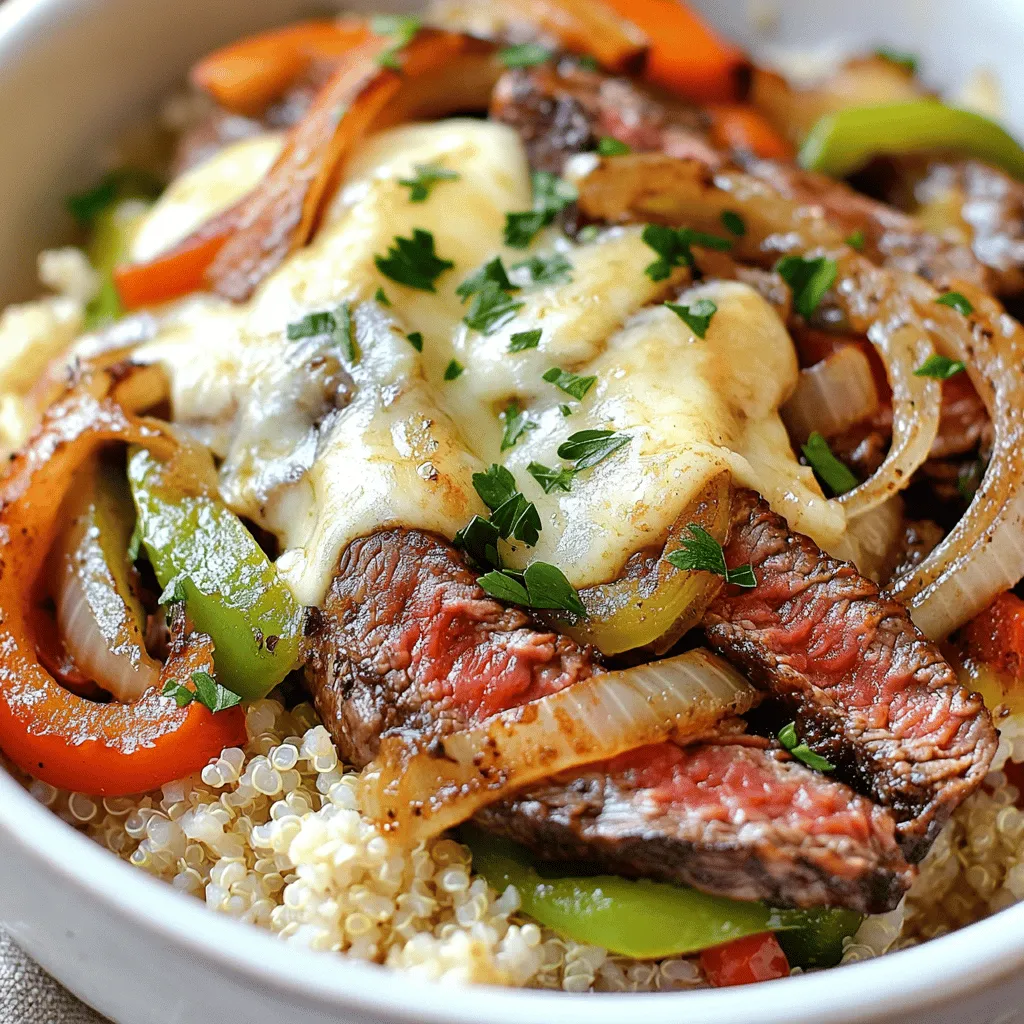
Philly Cheesesteak Bowls Flavorful and Simple Meal
If you’re craving a hearty meal that’s both tasty and easy to whip up, Philly Cheesesteak Bowls are the answer! Imagine tender ribeye steak, colorful
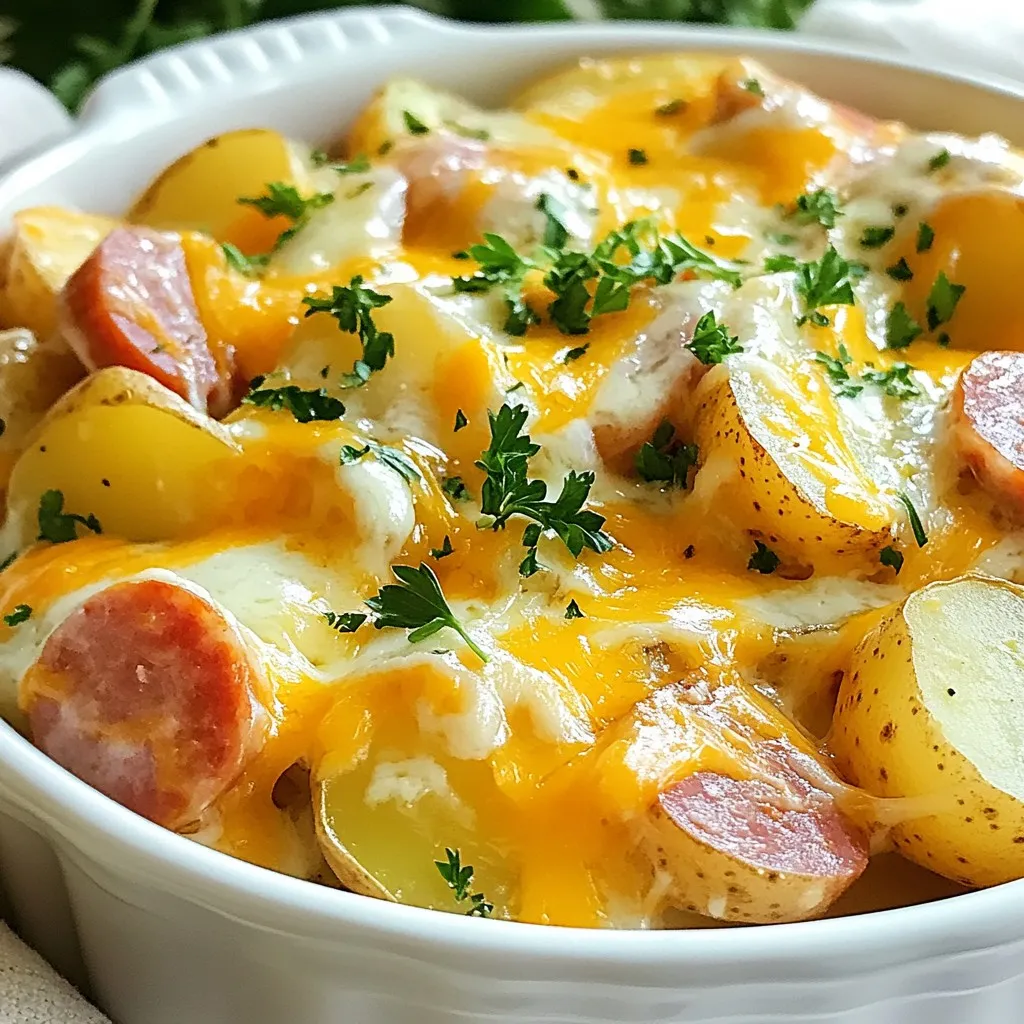
Crockpot Cheesy Potatoes & Kielbasa Easy Comfort Dish
Comfort food lovers, rejoice! If you’re craving a heartwarming meal that’s simple and satisfying, look no further than my Crockpot Cheesy Potatoes & Kielbasa. This
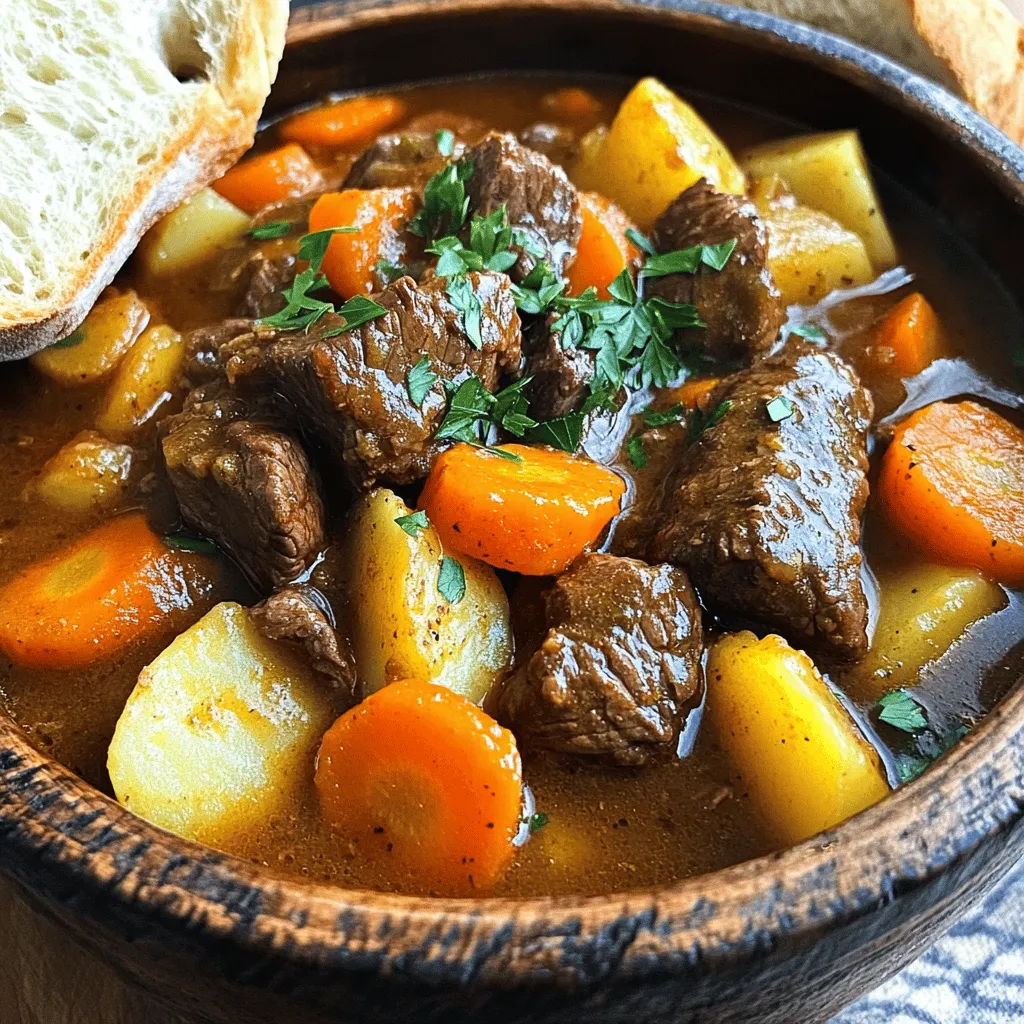
Savory Slow Cooker Beef Stew Delight for Dinner
Looking for a warm, hearty meal that’s easy to make? Welcome to my Savory Slow Cooker Beef Stew Delight for Dinner! This dish is perfect

Crispy Fried Chicken Dinner that Delights Everyone
Craving the ultimate comfort food? This Crispy Fried Chicken Dinner will delight your taste buds! In this post, I’ll guide you through every step, from
![The ingredients for a delicious Vegetarian Shepherd's Pie are simple and wholesome. Here’s what you need: - 2 cups cooked lentils (green or brown) - 1 large onion, finely chopped - 2 medium carrots, diced - 2 celery stalks, diced - 2 cloves garlic, minced - 1 bell pepper, diced (choose any color you like) - 1 cup frozen peas - 1 tablespoon tomato paste - 1 tablespoon soy sauce - 2 teaspoons fresh thyme (or 1 teaspoon dried thyme) - 1 teaspoon smoked paprika - Salt and freshly ground black pepper, to taste - 4 large potatoes, peeled and diced (for the mash) - 1/4 cup milk (can substitute with plant-based milk) - 2 tablespoons butter (or vegan butter for a dairy-free option) - Fresh parsley, chopped (for garnish) Each ingredient adds flavor and texture. The lentils provide protein. The vegetables bring color and crunch. Seasonings like thyme and smoked paprika give it warmth. Potatoes make a creamy topping that everyone loves. You can find the full recipe in the article above. Enjoy cooking this hearty meal! Start by cooking the potatoes. Place the diced potatoes in a large pot. Fill the pot with salted water. Bring the water to a rapid boil. Cook until the potatoes are tender, about 15 to 20 minutes. You can check them by piercing with a fork. Once cooked, drain the potatoes and return them to the pot. Now, let’s mash the potatoes. Add the butter and milk to the drained potatoes. Use a potato masher or fork to mash them. Aim for a smooth and creamy texture. Season with salt and freshly ground black pepper. Set your mash aside for later. Next, heat a splash of olive oil in a large skillet over medium heat. Add the chopped onion and minced garlic first. After a minute, add the diced carrots, celery, and bell pepper. Sauté this mixture for about 5 to 7 minutes. You want the vegetables to soften and smell great. Now, you’ll mix the lentils with the vegetables. Stir in the cooked lentils, tomato paste, and soy sauce. Add fresh thyme, smoked paprika, salt, and pepper. Cook everything together for about 5 minutes. This helps the flavors blend well. Finally, add the frozen peas and cook for another 2 minutes until they are warm. Preheat your oven to 400°F (200°C). In a baking dish, spread the lentil and vegetable mixture evenly as the base. Make sure it covers the bottom of the dish. Then, generously top it with the creamy potato mash. Spread the mash evenly to cover the filling completely. Place the assembled pie in the preheated oven. Bake for about 25 to 30 minutes. Check for doneness when the top is golden and a bit crisp. After baking, remove the pie from the oven and let it cool slightly. As a finishing touch, sprinkle freshly chopped parsley on top. This adds a fresh flavor and makes the dish look nice. You can serve the pie directly from the baking dish. For a fancier look, portion it onto plates and add extra parsley. Enjoy your hearty Vegetarian Shepherd’s Pie! For the complete recipe, check out the [Full Recipe]. - Choosing the right variety: Use green or brown lentils. They hold their shape well. Avoid red lentils; they turn mushy. - Cooking tips for optimal flavor: Rinse lentils before cooking. Add salt only after they are tender. This keeps them firm. - Types of potatoes to use: Use russet or Yukon Gold potatoes. They are starchy and mash easily. - Secret ingredients for creaminess: Add butter and milk or plant-based milk. Cream cheese can also add richness. - Additional herbs and spices: Try adding rosemary, sage, or bay leaves. They bring out great flavors in the filling. - Suggestions for homemade seasonings: Mix garlic powder, onion powder, and a pinch of cayenne. This adds depth and warmth to your dish. For the full recipe, check the complete guide to create your own Vegetarian Shepherd’s Pie! {{image_4}} You can easily make this dish gluten-free. One simple way is to replace soy sauce. Use tamari, a gluten-free soy sauce, for the same rich flavor. Always check labels on your ingredients to ensure they are gluten-free. Look for certified gluten-free products to avoid any cross-contamination. If you want a vegan version, swap out dairy and butter. Use plant-based milk like almond or oat milk for the mash. For butter, try vegan butter or olive oil. You can also boost plant-based protein by adding chickpeas or black beans to the lentils. This keeps the dish hearty and filling. Feel free to play with your veggies! Use seasonal options like zucchini, mushrooms, or sweet potatoes. They add unique flavors and textures. For extra taste, think about adding cheese on top or spices like cumin or chili powder. These can elevate the dish and make it your own. To keep your Vegetarian Shepherd’s Pie fresh, use airtight containers. Glass or plastic containers work well. Let the pie cool before sealing it. Store it in the fridge if you plan to eat it within a few days. For longer storage, freeze portions. Make sure to wrap them tightly in plastic wrap or aluminum foil. This helps prevent freezer burn. For the best texture, reheat the pie in the oven. Preheat it to 350°F (175°C). Place the pie in an oven-safe dish, covered with foil. Heat for about 20 to 25 minutes. If you prefer a microwave, cut a slice and microwave it for 2 to 3 minutes. Check if it's warm all the way through. In the fridge, Vegetarian Shepherd’s Pie lasts about 3 to 5 days. If frozen, it can stay good for up to 3 months. Always check for signs of spoilage before eating. If you see mold or smell something off, it’s best to toss it. Enjoy your meals safely! Making Vegetarian Shepherd’s Pie takes about 60 minutes. You spend 20 minutes getting everything ready. Then, you cook it for about 40 minutes. This time includes making the mash and baking the pie. Yes, you can switch up the vegetables! Feel free to try: - Zucchini - Mushrooms - Spinach - Sweet potatoes instead of regular potatoes These options add unique tastes and textures. Just chop them into small pieces for even cooking. Absolutely! You can prepare the filling and mash a day before. Just store them in the fridge. When you are ready, assemble and bake. This makes it easy for busy days. You can also freeze it for later. Just thaw overnight in the fridge before baking. Enjoy the tasty warmth of this dish anytime! Check the Full Recipe for more tips. In this article, we covered how to make a delicious Vegetarian Shepherd’s Pie. We outlined key ingredients like lentils, fresh veggies, and steps for perfect mashed potatoes. You learned about sautéing, combining, and baking the pie, plus important storage tips. You now have the tools to create a warm and flavorful dish. Be creative with flavors and ingredients to make it your own. Enjoy sharing this hearty meal with others!](https://roastedflavors.com/wp-content/uploads/2025/06/636337c0-54d5-442e-961d-9f876be253b8.webp)
Vegetarian Shepherd’s Pie Hearty and Wholesome Meal
Are you ready to dive into a cozy, hearty meal that’s packed with flavor? This Vegetarian Shepherd’s Pie is your ticket to comfort food paradise!
![To make the perfect enchilada pasta, you need these key ingredients: - 8 oz pasta (penne or fusilli) - 1 tablespoon olive oil - 1 medium onion, diced - 2 cloves garlic, minced - 1 bell pepper (any color), chopped - 1 can (15 oz) black beans, drained and rinsed - 1 can (15 oz) diced tomatoes with green chilies - 1 cup corn kernels (fresh or frozen) - 1 tablespoon chili powder - 1 teaspoon cumin - 1 teaspoon smoked paprika - Salt and pepper to taste - 1 cup shredded cheddar cheese - 1 cup sour cream - Fresh cilantro for garnish These ingredients come together to create a dish that’s rich and satisfying. The black beans add protein, while the corn brings sweetness. The spices give it a warm kick. You can make this dish your own. Here are some optional ingredients to try: - Cooked chicken or ground beef for added protein - Avocado slices for creaminess - Jalapeños for heat - Lime juice for a zesty touch - Other cheeses like Monterey Jack or pepper jack Feel free to mix and match these options. They can change the flavor and texture of the dish. When picking your fresh ingredients, look for these tips: - Onions: Choose firm onions with dry, papery skins. Avoid any with soft spots. - Bell Peppers: Look for bright colors and a firm feel. They should be free from wrinkles. - Garlic: Pick bulbs that are plump and tight. Avoid any that feel soft or sprouted. - Corn: If using fresh corn, select ears with bright green husks. The kernels should be plump and milky when pierced. Using fresh ingredients will enhance the flavor of your enchilada pasta. Good produce makes all the difference! For the full recipe, check out the Enchilada Pasta Delight. Start by boiling water in a big pot. Add a pinch of salt to the water. Once it boils, drop in 8 ounces of pasta. I like penne or fusilli. Cook until it is al dente, about 8-10 minutes. Check the box for exact times. When done, drain the pasta and set it aside in a large bowl. In a large skillet, heat 1 tablespoon of olive oil over medium heat. Add 1 diced onion. Cook it for 3-4 minutes until it turns soft and clear. Next, add 2 minced garlic cloves and 1 chopped bell pepper. Stir and cook for another 2-3 minutes until the bell pepper is tender. Now, it’s time to mix in the fun stuff! Add 1 can of black beans, 1 can of diced tomatoes, and 1 cup of corn. Sprinkle in 1 tablespoon of chili powder, 1 teaspoon of cumin, and 1 teaspoon of smoked paprika. Season with salt and pepper. Stir well and let it simmer for 5 minutes. Then, gently fold in the cooked pasta. Sprinkle 1 cup of shredded cheddar cheese on top. Cover the skillet for 2-3 minutes to melt the cheese. Once the cheese is melted, remove from heat. Fold in half of 1 cup of sour cream for creaminess. Serve the enchilada pasta in bowls. Add a dollop of the remaining sour cream and some fresh cilantro on top. This adds color and flavor. You can even serve it in colorful bowls for a fun look. To avoid overcooking pasta, check it often. Cook it until it's al dente, which means it still has a little bite. Follow the package instructions for timing. Keep a close eye on it, especially in the last minute. Drain the pasta right away. Rinse it briefly with cool water to stop the cooking. This helps keep it perfect for your enchilada pasta. Spices are key to making enchilada pasta pop. Start with chili powder for heat and flavor. Cumin adds a warm, earthy taste. Smoked paprika gives it a nice smoky touch. You can also add garlic powder for extra depth. Feel free to adjust the spice levels to suit your taste. Mix and match spices to find your favorite blend. A dash of lime juice at the end brightens the dish even more. For a great melt, choose shredded cheddar cheese. It melts smoothly and has a rich flavor. You can also try Monterey Jack or a Mexican blend for a different taste. Grate your cheese fresh for the best melt. Avoid pre-shredded cheese if you can; it often has additives that prevent melting. Mix different cheeses for a unique flavor profile. A gooey, cheesy top will make your enchilada pasta shine. For the full recipe, check the recipe card above. {{image_4}} You can enjoy enchilada pasta in many ways. For a vegetarian dish, skip the meat. Use more beans or add lentils for protein. You can also add extra veggies like zucchini or mushrooms. If you love meat, try chicken, beef, or turkey. Cook the meat first, then mix it into the sauce. Both options are tasty and filling. If you want a kick, add spicy elements. You could use jalapeños or diced green chiles. Another great choice is to sprinkle in cayenne pepper or hot sauce. This adds heat and depth to the flavor. Adjust the spice level to fit your taste. Mix and match to find your perfect heat. If you need gluten-free options, many pastas are available. Look for pasta made from rice, quinoa, or chickpeas. These options work well in the recipe. Just make sure to cook them according to the package. You still get a delicious meal without gluten. It's all about finding what works for you. For the full recipe, check out the [Full Recipe]. To store leftover enchilada pasta, let it cool first. Place it in an airtight container. Make sure to seal it well to keep the flavor fresh. Store it in the fridge. It should last for up to three days. When you are ready to eat, just reheat it. If you want to freeze enchilada pasta, use a freezer-safe container. Portion it into smaller servings for easy meals later. You can freeze it for up to two months. When freezing, leave some space at the top. The pasta will expand as it freezes. To reheat enchilada pasta, you have a few options. You can use the microwave or stovetop. If using the microwave, cover the dish with a damp paper towel. Heat it in short bursts, stirring in between. If using the stovetop, heat over low heat and add a splash of water. This keeps the pasta from drying out. Enjoy your meal! Enchilada pasta is a fun twist on classic enchiladas. It combines pasta with enchilada flavors. You get a mix of cheese, beans, and spices. This dish is great for busy nights or gatherings. It’s colorful and packed with flavor. You can serve it warm and even top it with sour cream and cilantro. Yes, you can make enchilada pasta ahead of time. Just cook it and let it cool. Store it in the fridge for up to three days. When ready to eat, reheat it on the stove or in the oven. You may want to add a splash of water to keep it moist. This way, you save time when guests arrive. To spice up your enchilada pasta, add more chili powder or diced jalapeños. You can also use spicy diced tomatoes. Try adding a hot sauce of your choice. Adjust the heat to suit your taste. A little goes a long way, so start small. You can always add more! If you want to replace sour cream, try Greek yogurt. It gives a similar creamy texture. Cottage cheese can also work, but blend it first. For a dairy-free option, use cashew cream or avocado. These substitutes keep your dish rich and tasty without losing flavor. This article walked you through making enchilada pasta, from key ingredients to storage tips. You learned about essentials and options for custom flavors. We covered how to cook pasta just right and blend ingredients for a tasty meal. Remember, you can adjust spice levels and try new cheeses. Enjoy your delicious dish, and don’t hesitate to experiment. Each step brings you closer to a perfect plate of enchilada pasta.](https://roastedflavors.com/wp-content/uploads/2025/06/2d69b9bc-1c14-4132-a4da-12c815cbc461.webp)
Enchilada Pasta Flavorful Dish for Any Occasion
Are you ready to spice up your dinner routine? Enchilada pasta is the perfect dish that blends the bold flavors of enchiladas with the comfort
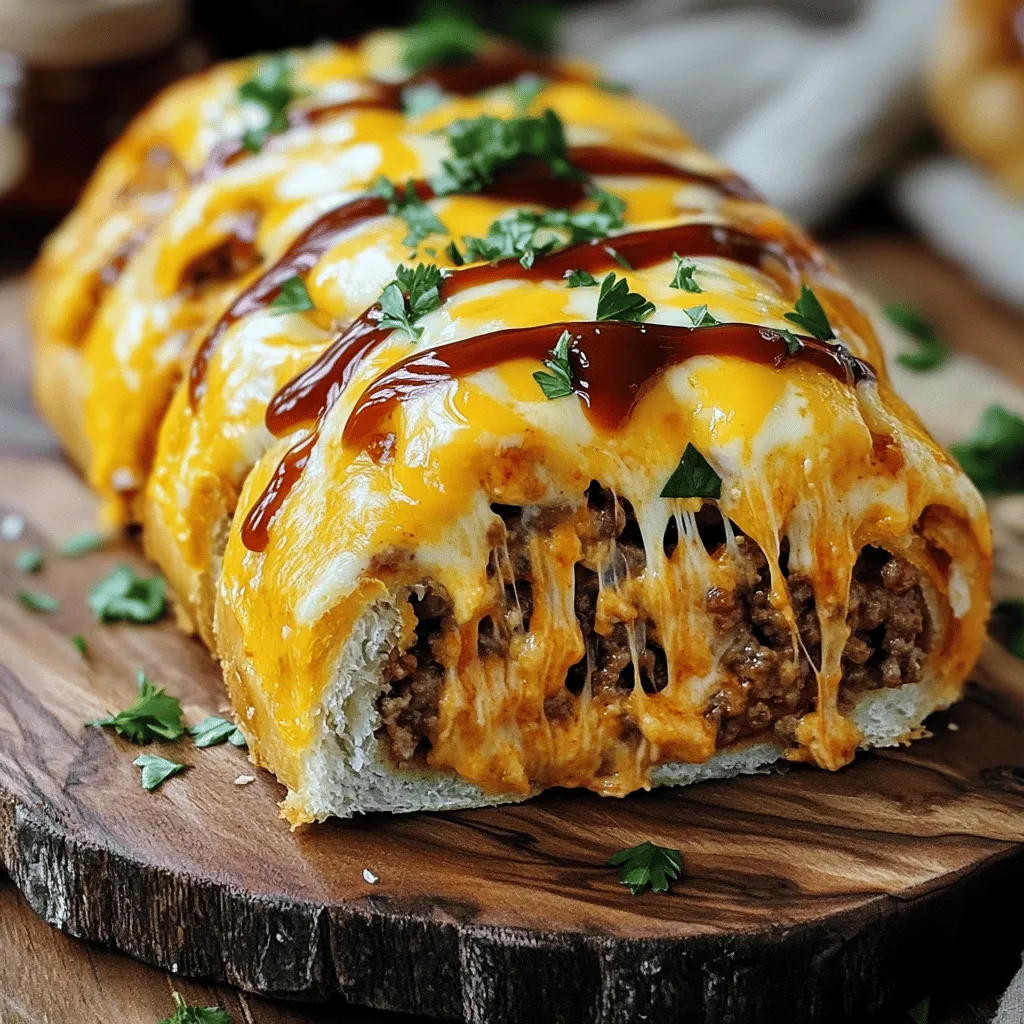
Cheesy Ground Beef Roll Flavorful Dinner Delight
If you’re craving a dinner that’s both cheesy and satisfying, you’re in the right place! The Cheesy Ground Beef Roll is a winning dish that